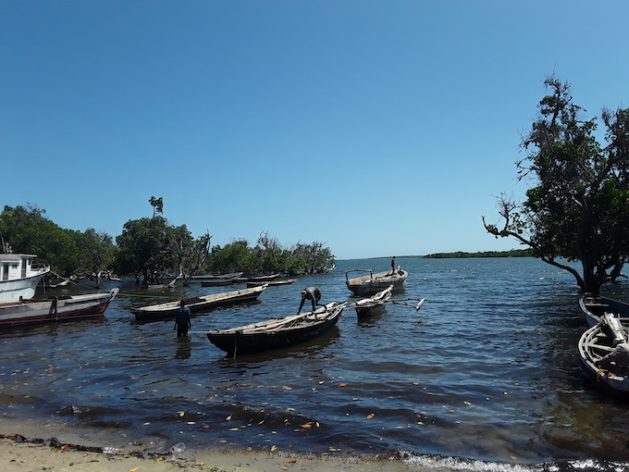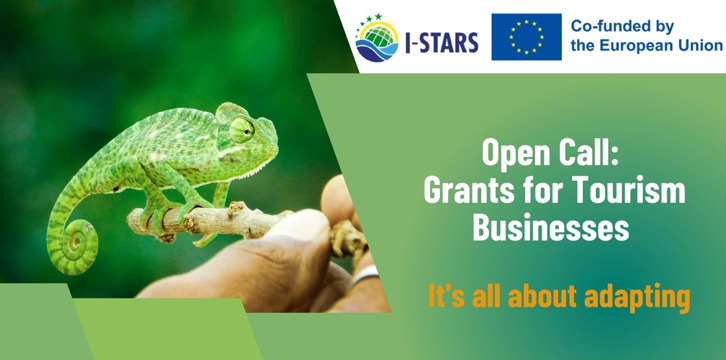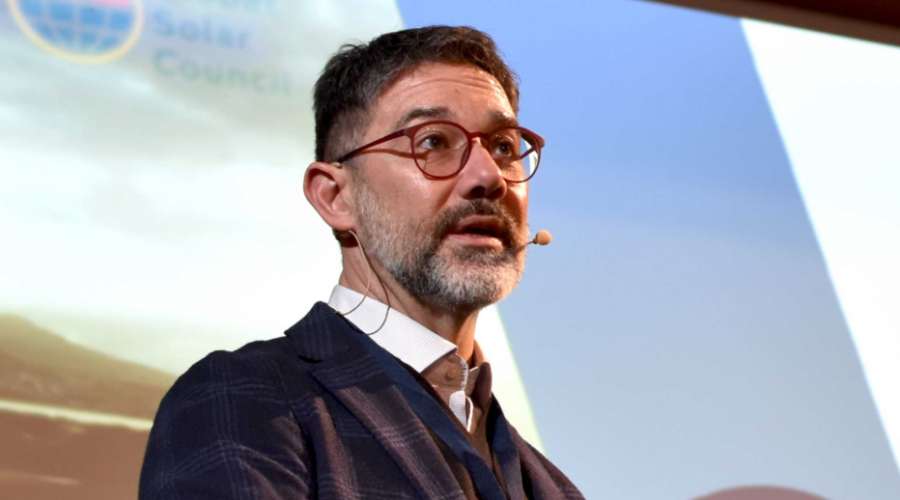As climate change threatens food security, livelihoods, sustainable and inclusive economic growth, countries with coastal blue carbon ecosystems are increasingly looking into the ocean for climate change and business solutions.
Angelique Pouponneau, CEO, Seychelles’ Conservation and Climate Adaptation Trust, says for these countries, “the blue economy, sectors dependent on healthy marine and coastal resources, is at the heart of their updated Nationally Determined Contribution (NDC) submissions.”
Under the Paris Agreement, countries revise their NDCs every five years to cut greenhouse gas emissions to limit the earth’s temperature rise and commit to implementing solutions to adapt to the effects of climate change.
Seychelles made a most ambitious commitment in its NDC to decarbonize its economy entirely by 2050, making it one of the few developing countries to do so.
“Seychelles developed a national blue economy road map anchored on identifying sectors of the blue economy industry that can generate wealth and sustainable management of marine resources. Priority areas include aquaculture to help build resilience among local communities and accelerate sustainable development,” says Pouponneau in an interview with IPS, adding that sustainable fishing and building ocean-based enterprises are crucial to the success of this Indian Ocean archipelago.
“Building ocean-based enterprises, providing a regulatory framework for sustainable businesses, and financing research and development activities are the three pillars of the blue economy roadmap.”
Seychelles launched the world’s first sovereign blue bond in 2018. The blue bond, Pouponneau says, is an innovative financial tool to support sustainable marine and fisheries start-ups and SMEs and the key to unlocking ocean-based sustainable business.
According to the Seychelles government, the bond is a pioneering financial instrument that raised US$15 million from international investors. The success of the bond demonstrates the potential for countries to harness capital markets for financing the sustainable use of marine resources.
Similarly, as part of the Nature Conservancy’s Blue Bonds for Ocean Conservation program, Belize signed a Conservation Funding Agreement, also known as the Blue Bond.
“Our Blue Bond is similar to Seychelles’. However, Belize’s is larger and has a more comprehensive set of targets,” Beverly Wade, the Policy and Planning Advisor in the Ministry of Blue Economy and Civil Aviation, tells IPS.
“The bond establishes a Conservation Fund of USD 180 million, to be accessed over 20 years, to support the implementation of coastal and marine conservation projects by government and non-governmental partners.”
Wade, a representative on the Belize National Climate Change Committee, says the ministry is finalizing the framework for Blue Economy for the South American country.
“This is a five-year multisectoral policy, strategy, and plan. Belize is one of the countries in the Mesoamerican Reef region involved in the Smart Coasts Project that promotes ecosystem-based adaptation and climate smarting of Marine Protected Areas and Coastal Development Plans,” she tells IPS.
Belize, a leader in marine spatial planning and habitat mapping, has updated Marine Habitat Map by processing satellite imagery and artificial intelligence to classify critical marine habitats such as seagrass and corals.
The Blue Bond, she says, will facilitate the completion of a comprehensive Marine Spatial Plan (MSP) for Belize’s entire Blue Space, an urban design term for visible water.
Overall, 163 nations have submitted their NDCs to the United Nations Framework Convention on Climate Change (UNFCCC) under the NDC Partnership.
The NDC Partnership is a global initiative to help countries achieve their national climate commitments through financial and technical assistance through the Climate Action Enhancement Package (CAEP).
The Partnership supports countries with a coastal blue carbon ecosystem to “enhance the quality, increase the ambition, and implement NDCs, every five years since the first round of NDC were submitted in 2016. With a footprint across 62 member countries and nine institutional partners since October 2017, the NDC Partnership holds significant experience, resources, and expertise to ensure that countries achieve NDC objectives.
This support is timely and critical. World Bank data shows the global ocean economy is valued at an estimated $1.5 trillion per year. Approximately 80 percent of international trade by volume is carried by sea, and an estimated 350 million jobs across the globe are linked to fisheries.
The report, NDCs-A Force for Nature? notes that 105 out of 114 updated NDCs submitted by October 12, 2021, included nature-based solutions in their roadmap to limit global warming.
Through CAEP, launched in 2019 with the technical and financial support of 46 partners, the NDC Partnership is currently supporting 67 countries to submit enhanced NDCs and fast-track their implementation.
The CAEP aims to catalyze change towards resilient, sustainable, and low-emission development, supporting the objectives of the Paris Agreement for member countries of the NDC Partnership. It also assists developing member countries in enhancing NDCs and fast-tracking their implementation, including providing in-country technical expertise and capacity building.
The NDC policy commitment, Pouponneau says, is a “robust, realistic, measurable and achievable yardstick against which Seychelles is evaluating its progress towards climate change resilience and sustainable development.”
“NDCs are a planning, finance and resource mobilization and accountability tool. And there is a commitment right from grassroots to the international level to achieve set targets.”
Wade agrees. She explains that through the NDC updating process, the National Climate Change Office, with support from the World Wildlife Fund and PEW Charitable Trusts, a National Blue Carbon Working Group was established.
“The group provided oversight for the research activities conducted in support of establishing realistic mangrove mitigation and adaptation targets for the updated NDC,” she says.
“The NDC also identifies concrete targeted actions to meet these obligations. And provides a space for bringing together planned and ongoing activities from existing national strategies as well as plans for target achievement.”
Both local communities and most of the Seychelles’ urban areas and infrastructure are concentrated next to the shore; therefore, the country’s economic activity relies on the sustainable management of marine resources.
“The blue economy’s primary challenge is the lack of understanding between the use of ocean-based resources, climate change resilience, and sustainable development. There is a need to educate local communities on why it is no longer business as usual,” Pouponneau says. “This education will go hand in hand with financial incentives to help local communities use ocean resources sustainably.”
Source: http://www.ipsnews.net/2021/12/blue-ocean-solutions-climate-resilience-accelerated-development/












